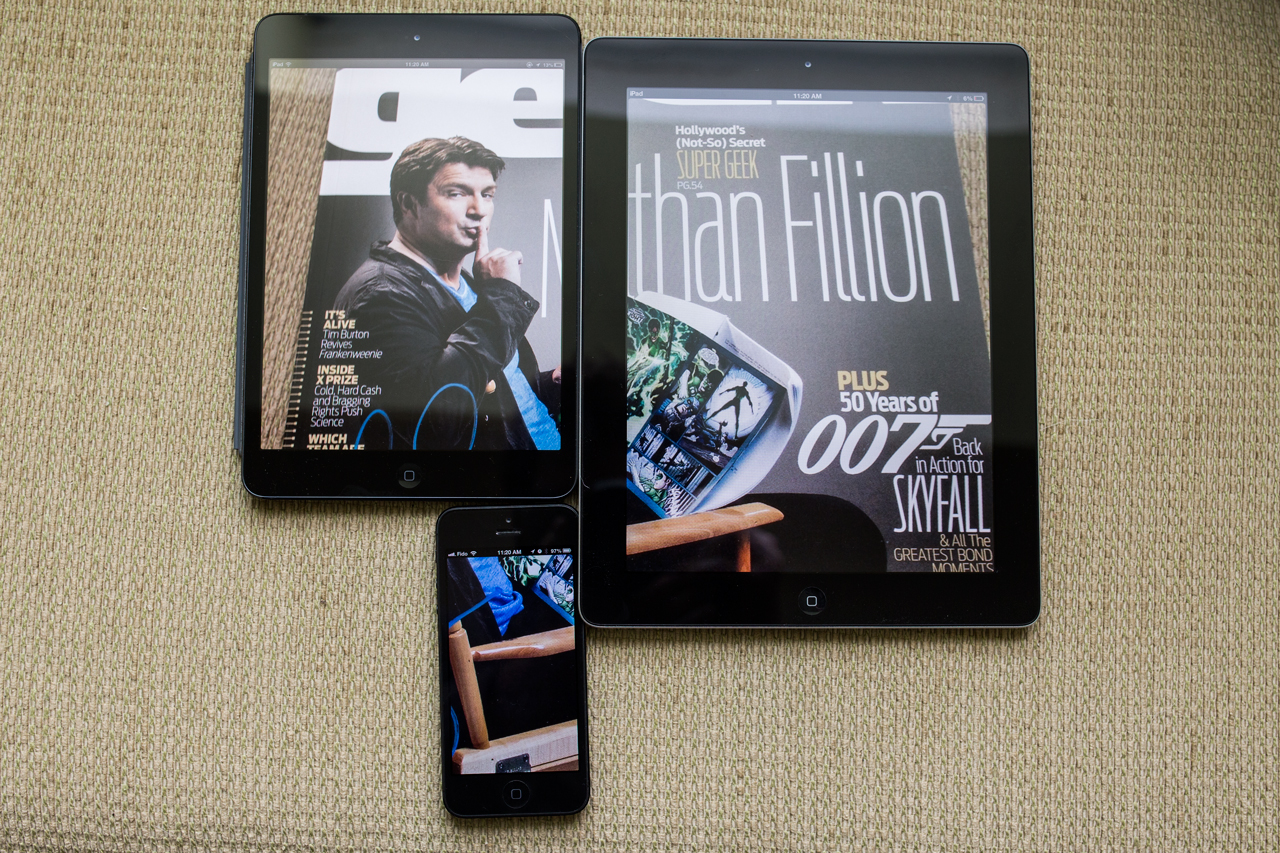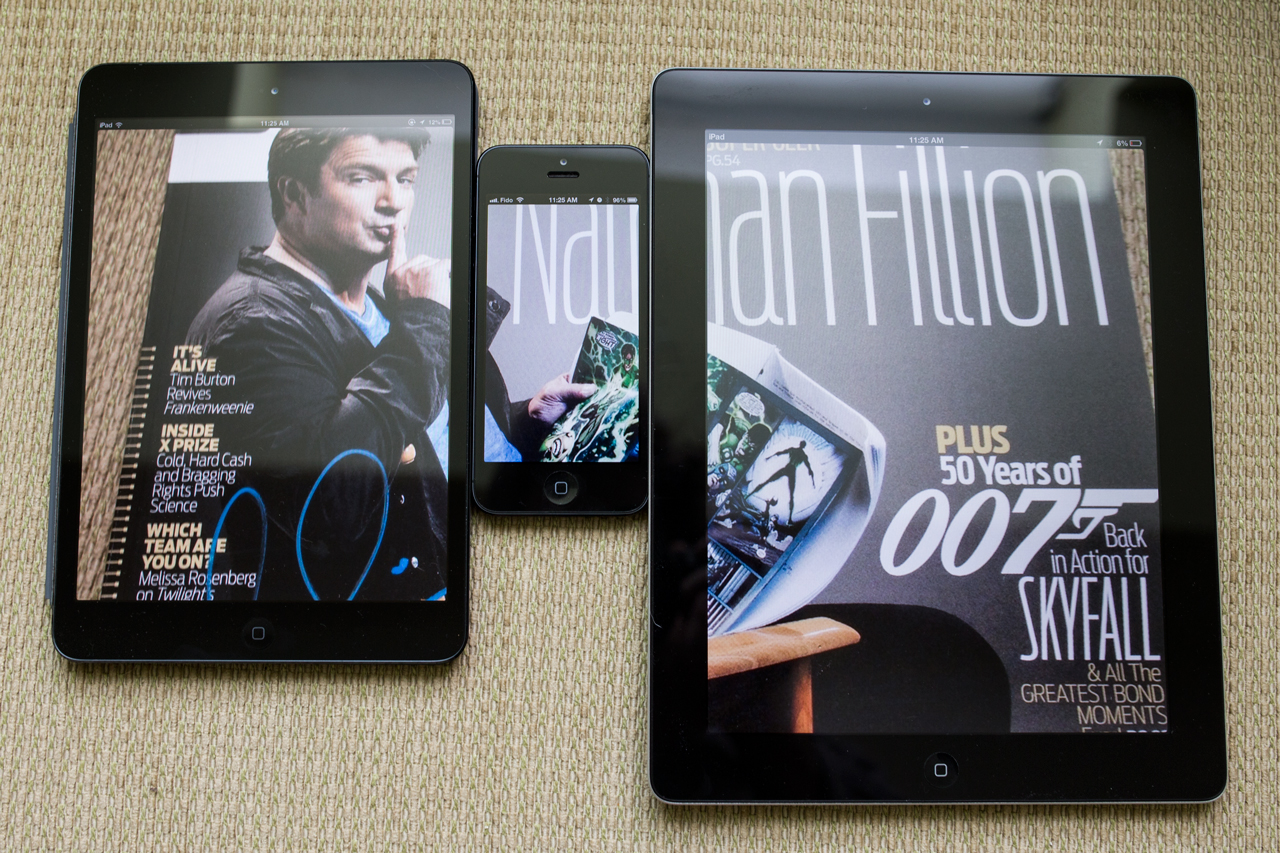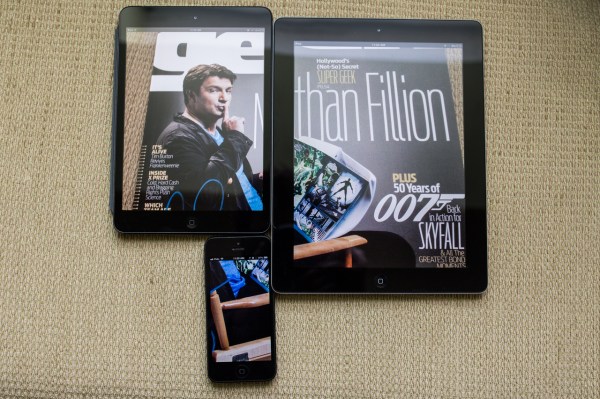A group of MIT students created an app at a PennApps Hackathon that can do amazing things, connecting multiple iOS devices into a single, interactive screen. The app itself, which doesn’t require any kind of jailbreaking or special access and is currently available in the App Store for free, is impressive enough, but Mosaic has much bigger plans: They’ve also created an SDK to let other developers incorporate similar functionality into their own apps.
The possibilities are immediately attractive. Imagine a board game that spans four iPad minis, one for each player. Or a dungeon-crawling RPG where you build the map by laying iPhones end to end. There are obvious uses too in display advertising and customer-facing terminals and POS applications, but the prospect of interactive apps that can use the multiple iOS devices already residing in many households to add up to something more than just the sum of its parts is what really excites the imagination.
“We’ve talked to a lot of casual developers and there’s a significant amount of interest for things like board games, that’s like the easiest one for everyone to do,” Mosaic co-founder Ishaan Gulrajani explained by way of examples. “Everyone has an iPad, you put them together, and then you have a surface that’s huge enough that you can play board games, or you have something like Angry Birds, where you have the birds on one phone, and then on another the second player can build a structure that the first tries to knock down.”
 For tabletop gamers eager for a digital version of Settlers of Catan or Warhammer that accurately recreates the experience of the physical board game, but with the flexibility and added extensibility of digital, the appeal is clear. Mosaic has also been talking to creative agencies, and they’ve observed that people will actually open the app just for the novelty of this new way of interacting with the device. For brands and advertisers, that’s a huge selling point, since it’s a draw for an audience that might otherwise pass something by entirely. For increasing engagement on in-store display advertising, or on branded content, that’s a big plus.
For tabletop gamers eager for a digital version of Settlers of Catan or Warhammer that accurately recreates the experience of the physical board game, but with the flexibility and added extensibility of digital, the appeal is clear. Mosaic has also been talking to creative agencies, and they’ve observed that people will actually open the app just for the novelty of this new way of interacting with the device. For brands and advertisers, that’s a huge selling point, since it’s a draw for an audience that might otherwise pass something by entirely. For increasing engagement on in-store display advertising, or on branded content, that’s a big plus.
“Brands can do things like ‘Swipe this Starbucks coupon from one phone to another, and you both get a dollar over your next Starbucks purchase,’ for instance,” Gulrajani said. “We have something that’s inherently viral, and we want to be able to leverage that in every way that we can.”
The Mosaic.io app itself, which is designed mainly as a proof-of-concept and sales demonstration tool for the tech behind it, nonetheless offers some useful features for end-users, too. You can instantly get set up sharing photos stored either locally or on Dropbox, and as you can see from my demo photos, the display will update to reflect different orientations when you swipe across screens. You can tell it’s just meant for demo purposes when you use the app, but even the limited functionality is enough to wow anyone watching.
 So far, the Mosaic team has tested up to 10 iPhones, and has found that even with that many devices, video latency isn’t a huge issue. The way they achieve that is by using a single synchronized clock across the various devices using clock synchronization algorithms, and while quality will vary depending on the strength of a user’s Internet connection, Gulrajani says it’s “definitely” acceptable for playing back video.
So far, the Mosaic team has tested up to 10 iPhones, and has found that even with that many devices, video latency isn’t a huge issue. The way they achieve that is by using a single synchronized clock across the various devices using clock synchronization algorithms, and while quality will vary depending on the strength of a user’s Internet connection, Gulrajani says it’s “definitely” acceptable for playing back video.
Mosaic is looking to launch initially by connecting with developers eager to use it. They aren’t implementing any kind of queuing system, and are treating requests on a first-come, first-served basis. The startup is bootstrapped, and hopes to remain that way for the foreseeable future, with plans to later charge for API use based on the volume of calls required by developers.
